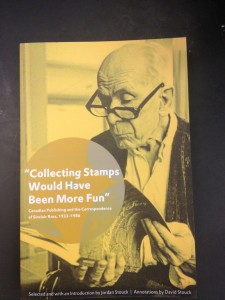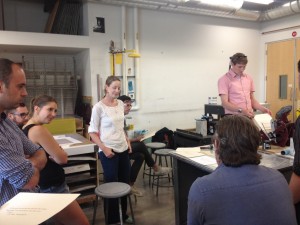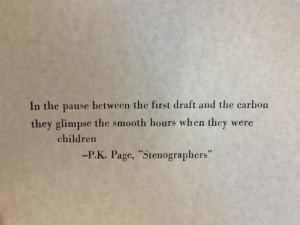Community
July 22, 2014
Narrating, Marketing, and Editing the Pause Between
Day 1 of TEMiC: The Okanagan edition
We kicked off the first day of the Theories of Editing Modernism in Canada (TEMiC) course with discussion of how the market shapes scholarly and creative output. A discussion anchored with examples of the differences between editions of Michael Ondaatje’s Billie the Kid and Atwood’s “This is a Photograph of Me” and The Journals of Susanna Moodie. The beauty of the white space that faces “This is a Photograph of Me” is lost in many anthologies that leave no room for the blank page. Canadian literary awards offer another instance of the marketability of literature; a market that more and more perpetuates the relationship between literary weight and physical weight: the books nominated for the Giller and the Governor General’s award seem to be growing in size, getting longer and longer. So, what are we, as scholars, as readers, in the market for? The reigning question at the end of Day 1’s morning session was: how do we define reading pleasure? Is it the pleasure of the interrupted text with scholarly apparatus? Or is it the pleasure of the plain text? And how is the market defining pleasure?
This issue of the market was picked up in the afternoon with guest speakers Jordan Stouk and David Stouk. Jordan and David spoke about Collecting Stamps Would Have Been More Fun; a collection of Sinclair Ross’s letters that has been aptly described as a “tragic novel” because it narrates Ross’s literary rejection. His book The Well exemplifies the demands of the market: the publishers shaped Ross’s book based on their projections of the market, but despite all these efforts, the market did not respond. Ross was left with a work that catered to the market, but the market was not buying. Jordan and David’s talk in part narrativized the blank place between Ross’s publications, the time of the rejections, the act of not writing and of not publishing.
In a letter to Margaret Laurence after the publication of The Diviners, Ross writes, “It’s the blank place that haunts the reader. There’s so much you don’t know—as you say, so much pain” (Feb 5, 1975). This passage resonates with the day’s discussion about market and speaks to the haunting pleasure of the white space and, to use a phrase from PK Page, “the pause between.”
How do you define reading pleasure? How do you negotiate different reading experiences in the classroom? Do you prefer an edition with a critical apparatus? Do students prefer editions with introductions, related essays, and critical material? How do you enter the text?


